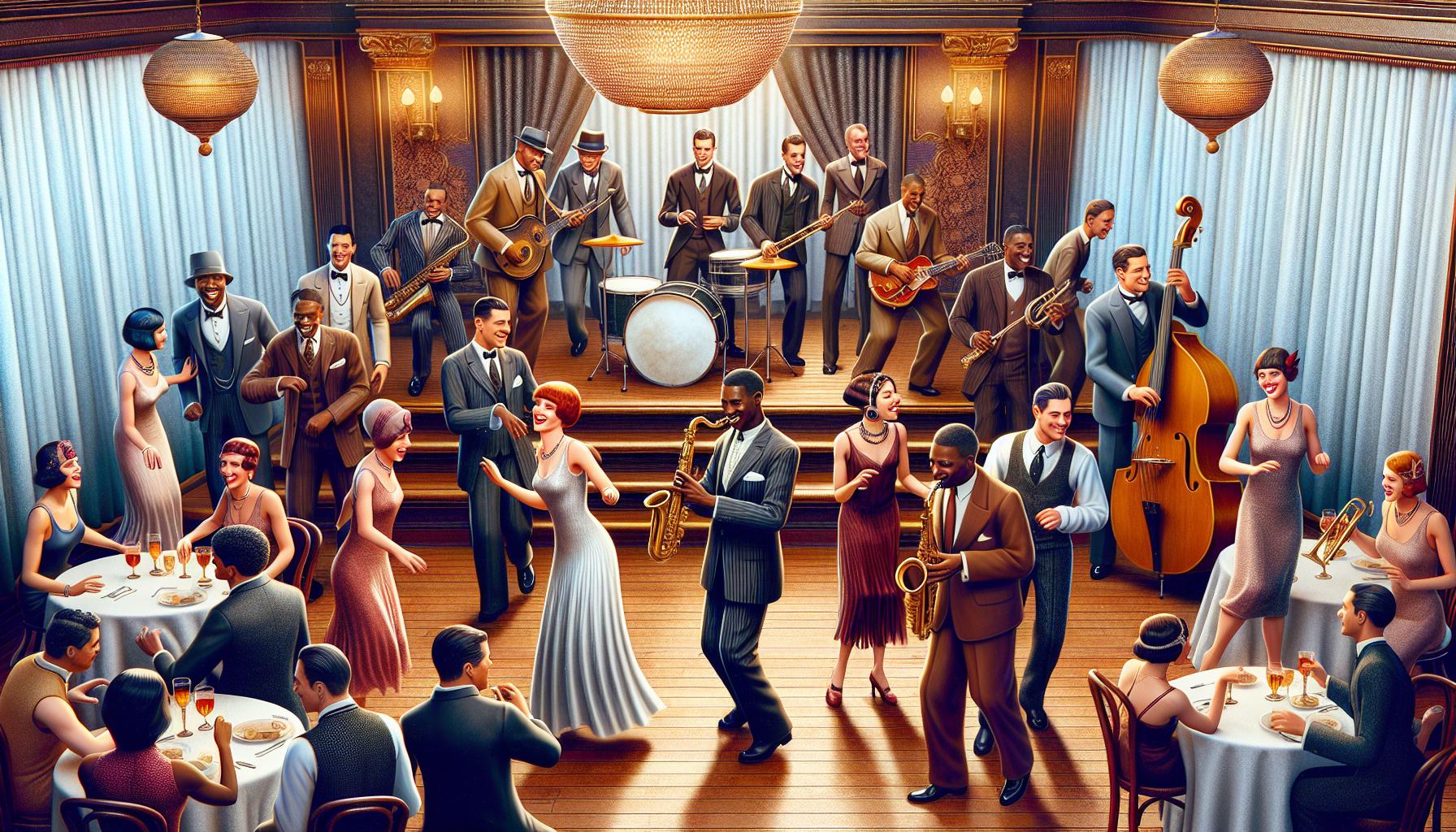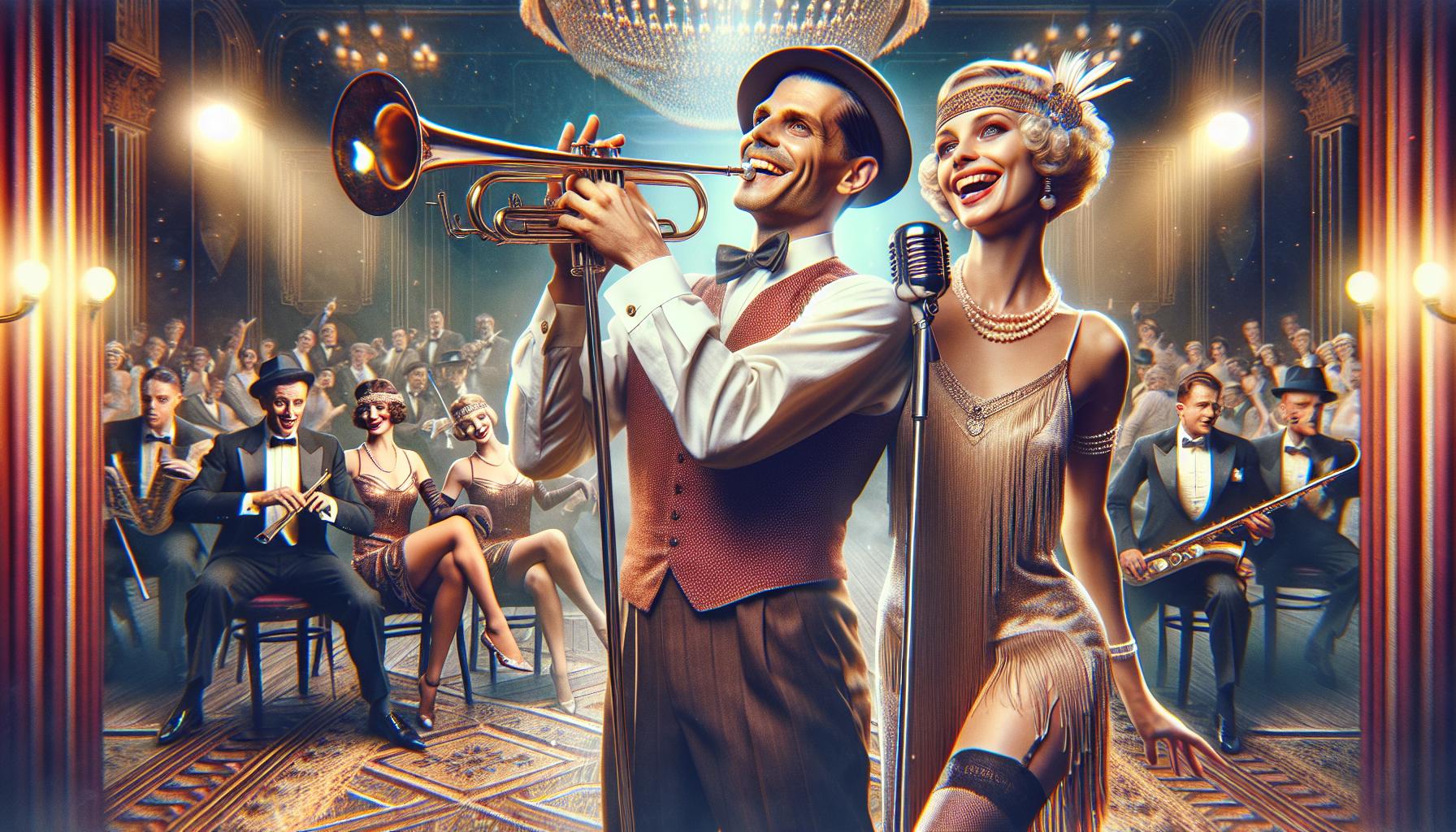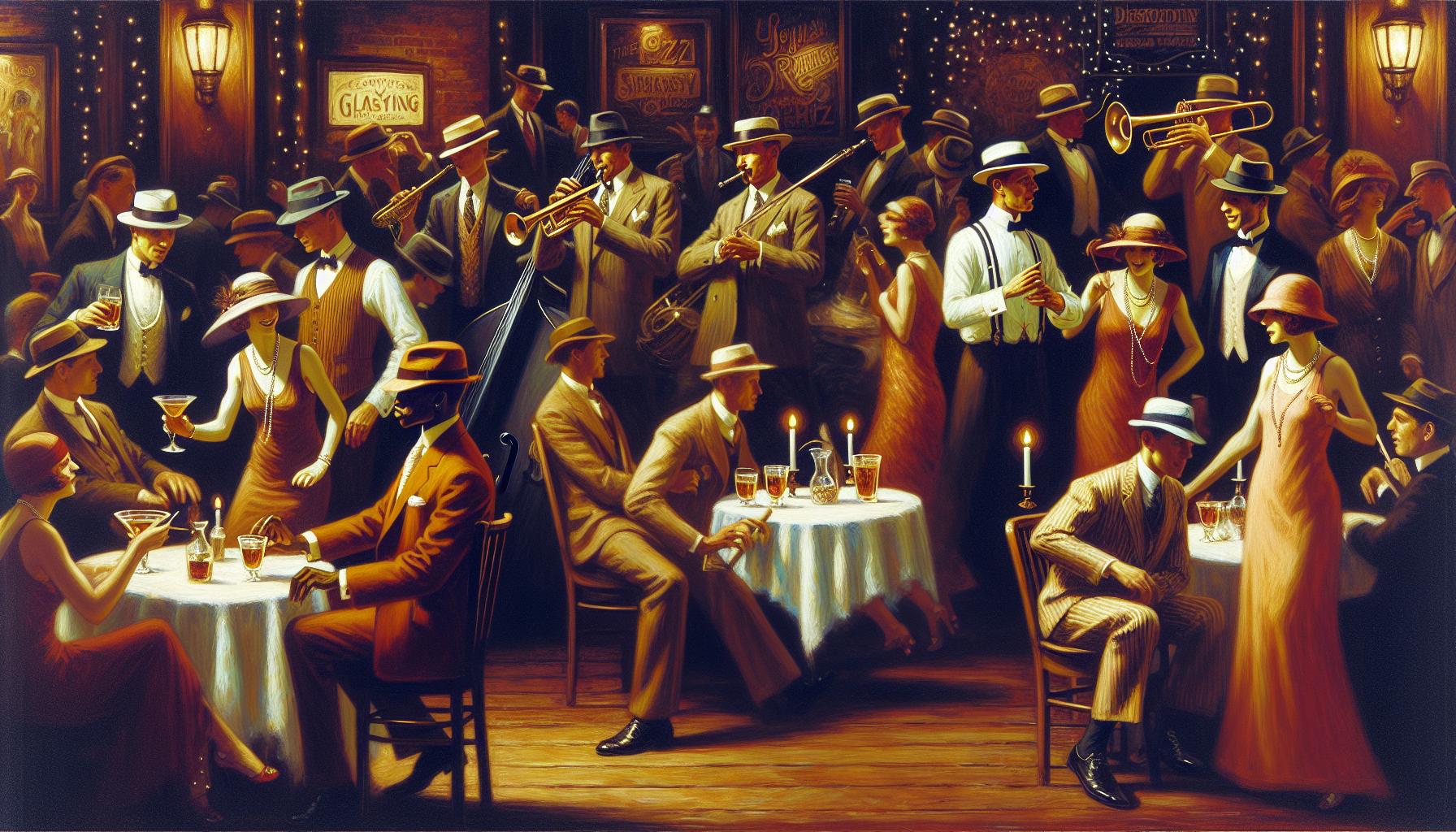The 1920s marked a vibrant era in music, bursting with innovation and cultural shifts. As the world emerged from the shadows of World War I, jazz took center stage, captivating audiences with its improvisational flair and infectious rhythms. Speakeasies and dance halls thrived, serving as the backdrop for a musical revolution that would influence generations to come.
During this dynamic decade, artists like Louis Armstrong and Duke Ellington redefined the soundscape, blending traditional melodies with new styles. The Charleston and the Shimmy became popular dance crazes, reflecting the carefree spirit of the Roaring Twenties. Exploring the music of this era unveils a rich tapestry of genres and artists that shaped the cultural landscape, creating a lasting legacy that still resonates today.
Key Takeaways
- Jazz Exploded in Popularity: The 1920s were marked by the rise of jazz as the dominant genre, with influential artists like Louis Armstrong and Duke Ellington paving the way for modern music.
- Cultural Impact of Dance Crazes: The Charleston and the Shimmy became iconic dance styles, illustrating the lively social scene fostered by nightclubs and dance halls.
- Emergence of Blues and Folk: Artists like Bessie Smith and Ma Rainey brought the blues into mainstream consciousness, deepening emotional expression in music and connecting with a wide audience.
- Technological Advances: The advent of radio and the phonograph revolutionized music distribution, helping artists reach larger audiences and solidifying hit records as key components of the music industry.
- Enduring Legacy of Composers: Prominent composers such as George Gershwin and Irving Berlin created timeless classics, shaping the soundscape of American music and influencing future generations.
- Influence of Prohibition: The era of Prohibition led to the rise of speakeasies, where jazz music thrived as a form of rebellious expression, underscoring the cultural dynamics of the time.
What Music Was Popular In The 1920s
The 1920s marked a pivotal decade in the music landscape, characterized by rapid evolution and diversification. Jazz emerged as the leading genre, captivating audiences and establishing itself as a symbol of the era’s vibrancy. Artists like Louis Armstrong and Duke Ellington played significant roles in defining jazz through their innovative compositions and improvisational styles.
Dance music held a central place in the social fabric of the 1920s. The Charleston and the Shimmy were among popular dance crazes that encouraged energetic and spirited performances in nightclubs and dance halls. Dance bands, often fronted by charismatic leaders, brought new energy to performances, melding jazz with traditional pop melodies.
The decade also witnessed the rise of blues and folk music. Notable figures, such as Bessie Smith and Ma Rainey, brought the blues to broader audiences, enhancing its emotional depth and storytelling. Folk music gained traction through its authentic representation of daily life, resonating with a wide range of listeners.
The advent of radio and the phonograph revolutionized music distribution. These technologies facilitated artists’ reach, allowing them to connect with national audiences. Consequently, hit records became essential to the music industry, with many songs achieving widespread popularity.
Classic compositions arose during this decade. The works of composers like George Gershwin and Irving Berlin left an indelible mark on American music, blending various influences into timeless classics. Their contributions not only defined popular music but also shaped future generations of musicians.
Overall, the 1920s exemplified a rich tapestry of musical innovation. Jazz, blues, and popular standards from this era continue to influence modern music, highlighting the lasting legacy of this transformative decade.
Genres That Defined the Era

The 1920s saw a dynamic fusion of musical genres that shaped the cultural landscape. Key genres during this period include jazz, blues, and ragtime, each contributing uniquely to the era’s vibrant sound.
Jazz: The Sound of a Generation
Jazz emerged as the quintessential genre of the 1920s. Pioneered by artists like Louis Armstrong and Duke Ellington, jazz combined elements of African American music with innovative improvisation. Its lively rhythms and syncopation created a sense of freedom and spontaneity, resonating deeply with audiences. Jazz clubs became social hubs, where people gathered to dance and enjoy the exuberance of live performances. The genre’s evolution during this decade not only defined the sound of a generation but also laid the groundwork for future musical styles.
Blues: Roots and Influence
Blues music transitioned into the mainstream during the 1920s, heavily influenced by African American traditions. Artists like Bessie Smith and Ma Rainey conveyed profound emotions and stories through their powerful vocals and poignant lyrics. The blues’ themes often reflected struggles and triumphs of everyday life, providing a voice for the marginalized. Its raw, heartfelt expression resonated beyond its origin, influencing several genres that followed, including rock and roll and rhythm and blues.
Ragtime: The Dance Craze
Ragtime dominated the popular music scene early in the decade, characterized by its syncopated rhythms and lively melodies. Scott Joplin’s compositions, such as “The Entertainer,” exemplified the style and gained widespread acclaim. Ragtime’s infectious beats fueled dance crazes and social gatherings, making it a staple in dance halls and homes. This genre set the stage for the subsequent rise of jazz by introducing rhythmic complexities and appealing melodies that captivated audiences across diverse backgrounds.
Key Artists and Bands

The 1920s featured a variety of influential artists and bands that shaped the musical landscape. These key figures transformed genres, inspired dance trends, and left lasting legacies in American music.
Louis Armstrong
Louis Armstrong stands as a pivotal figure in jazz music during the 1920s. His trumpet playing and distinctive voice redefined jazz, bringing improvisation and creativity to the forefront. Notable recordings such as “West End Blues” and “Hotter Than That” showcased his innovative style. Armstrong’s performances, characterized by their exuberance and charisma, captivated audiences and propelled jazz into mainstream culture.
Bessie Smith
Bessie Smith emerged as the “Empress of the Blues,” bringing emotional depth to the genre. Her powerful voice and expressive delivery helped popularize blues music across the nation. Hits like “Downhearted Blues” and “St. Louis Blues” resonated widely, reflecting themes of love and hardship. Smith’s collaborations with instrumentalists like Louis Armstrong further elevated her status, influencing future generations of musicians in both blues and jazz.
Irving Berlin
Irving Berlin played a crucial role in the development of American popular music. As a prolific composer, his songs captured the spirit of the Roaring Twenties. Berlin’s works, including “Alexander’s Ragtime Band” and “Blue Skies,” blended catchy melodies with relatable lyrics. His contributions to Broadway musicals and film scores established a new standard in American songwriting, influencing many artists long after the 1920s.
Cultural Impact of 1920s Music

The music of the 1920s significantly shaped cultural dynamics, influencing social behavior, entertainment, and industry practices. The vibrant sounds of this decade created an atmosphere of freedom and expression that resonated deeply within society.
Music and Prohibition
Prohibition fundamentally transformed the music scene during the 1920s. The ban on alcohol led to the rise of speakeasies, underground bars where jazz music thrived and illicit drinking became an act of rebellion. These venues provided a space for musicians to showcase their talents while patrons danced to the energetic rhythms of jazz and blues. Iconic figures, like Louis Armstrong and Duke Ellington, gained popularity in these settings, further solidifying jazz as the soundtrack of resistance against societal norms. The clandestine nature of these gatherings fostered a sense of camaraderie, where music served both as entertainment and a form of liberation.
Music in Film and Radio
The emergence of film and radio in the 1920s propelled music into the mainstream. Silent film scores relied heavily on live music, with theaters employing orchestras to enhance the viewing experience. The introduction of synchronized sound in films marked a turning point, making musical performances integral to cinematic storytelling. Artists like Irving Berlin capitalized on this trend, writing songs specifically for movies. Meanwhile, radio broadcasts connected listeners across vast distances, allowing popular music to reach audiences nationwide. This technological advancement facilitated the sharing of musical styles, leading to increased exposure for diverse genres and artists, effectively shaping the American musical landscape while reinforcing popular culture during the Roaring Twenties.
Foaundation For Modern Genres
The music of the 1920s laid the foundation for modern genres and continues to influence artists today. The vibrant sounds of jazz, blues, and ragtime reflected a society in transition, embracing change and celebrating creativity. Iconic figures like Louis Armstrong and Bessie Smith not only entertained but also shaped cultural narratives through their artistry.
As technology advanced, music became more accessible, allowing diverse styles to flourish across the nation. The lively atmosphere of speakeasies and dance halls fostered a spirit of liberation that defined the era. The legacy of 1920s music resonates in contemporary culture, reminding us of the power of artistic expression in shaping social dynamics and cultural identity.